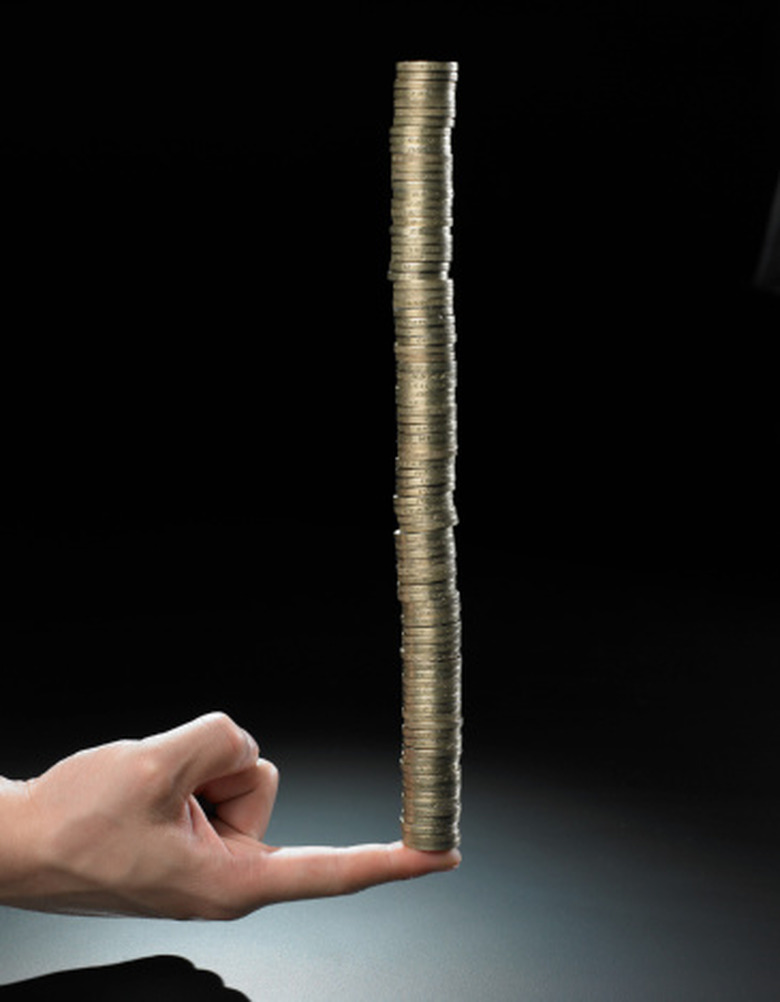Metal Composition Of Coins
What are United States coins made of? The composition of the coins has changed dramatically over the years. While coins used to be made of valuable metals like silvers, most are now composed of less valuable but longer-lasting metals, like nickel, copper and zinc. US nickel composition is different from other U.S. coins because it is a mixture of two metals – nickel and copper – rather than the layered metals found in other coins. Most other U.S. coins are made of layers that are pressed together, which is called a clad coin. While the costs to mint different coins vary, they do not necessarily correspond to the face value of the coin. For instance, it costs about 9.4 cents to mint a nickel, which is worth 5 cents.
Denominations of Coins
Denominations of Coins
While the U.S. Mint used to produce $5, $10 and $20 coins, its production today is limited to mostly all cents coins: pennies, nickels, dimes and quarters. Two other coins are produced: half dollars and dollars.
U.S. coins are made of several different metals in unique combinations. Half dollar, dime and quarter metal content is the same; they are all made of a copper core with copper-nickel plating. All of the other coins have distinct compositions, which is one way of deterring counterfeiting.
Pennies are made of copper-plated zinc, nickels are composed of a copper-nickel alloy and dollars have a copper core with manganese brass plating. The composition of U.S. coins has changed since the U.S. Mint began producing currency in 1793. This is due to a number of factors, including the value of the metals used and the need for the metals in other products.
Changing Coin Compositions
Changing Coin Compositions
Changes to the compositions of U.S. coins have been necessary for a variety of reasons. Over the 225 years that the U.S. Mint has been making coins, a number of changes in technology and availability of metals has led to new ways of making coins and new metal combinations in the compositions of the currency.
While each press could make about 100 coins per minute in the 1800s, the presses used today are capable of producing 720 coins per minute. At first, pennies were made of pure copper; this changed in 1857, when the U.S. Mint added nickel to the copper. Zinc replaced nickel in the formula in 1864, and it became an even larger part of the penny in 1943, when copper was needed for the war effort in World War II. Later, in 1982, the U.S. Mint began producing pennies made of only 2.5% copper.
U.S. nickel composition has also changed significantly over the years. While originally composed of silver, the nickel became the first coin produced without silver when it started being produced with a combination of copper and nickel in 1866. Similarly, silver was eliminated from the composition of dimes and quarters in 1965.
The U.S. Mint stopped producing gold coins in 1933, as an attempt to stabilize the value of gold during the Great Depression. Private ownership of gold coins was banned from 1933 to 1974 as a result of legislation passed during the Great Depression.
History of Coin Production
History of Coin Production
The U.S. Mint opened in 1793, as a result of the Coinage Act of 1792. Before this time, a mixture of foreign and domestic coins were used in the country, including British pounds, German thalers, Spanish milled dollars and some coins produced by U.S. colonies.
In 1972, construction of the National Mint began in Philadelphia. The first coins produced for circulation, 11,178 copper cents, were delivered in March of 1793.
In the early years, the U.S. Mint was not able to put enough coins into circulation, due to the slow and physical nature of the first coin presses. Huge leaps in production came in the 19th century, with the introduction of steam power. By 1857, the U.S. Mint was able to produce all the coins needed in the nation, and a law was passed by Congress to ban circulation of foreign coins.
Cite This Article
MLA
Sloane, Christina. "Metal Composition Of Coins" sciencing.com, https://www.sciencing.com/metal-composition-of-coins-12501782/. 18 January 2022.
APA
Sloane, Christina. (2022, January 18). Metal Composition Of Coins. sciencing.com. Retrieved from https://www.sciencing.com/metal-composition-of-coins-12501782/
Chicago
Sloane, Christina. Metal Composition Of Coins last modified March 24, 2022. https://www.sciencing.com/metal-composition-of-coins-12501782/
